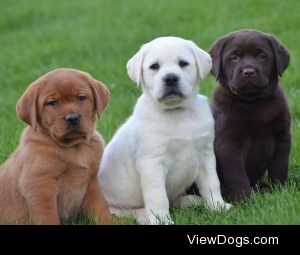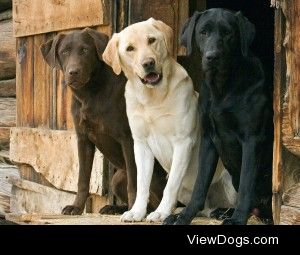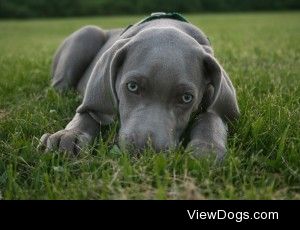Labrador Retriever is one of the most popular dog breeds. Originally the breed was bred as a working dog, so many Labradors are still used as a sporting dog, guide dogs, rescue dogs. The breed originated on the island. Newfoundland on the east coast of Canada.The results show that there are three versions of the origin of the breed’s name “Labrador”. First Labradors were exclusively black, in color resembling the breed “labradorite.” Perhaps in honor of this stone and Labrador got its name. The second version says that the ancestors were bred Labradors in Labrador. And third, that the Portuguese Labradors so nicknamed for their amazing performance, calling their Labradors, which in Portuguese means “hard worker.”
Breed Overview
Labrador Retriever , or as it is called St. John’s dog , was brought to Britain in the early thirties from the island of Newfoundland. Then, these dogs were used as helpers for pulling fishing nets on the shore. Over time, the breed became very popular in England and here received its present name.
It is sturdy, strong, well-developed and active animals . They thrive in water, because of this they are to be a certain kinship with Newfoundland . There are also suggestions of crosses with Weimaraners , because sometimes there are Labradors silver (gray ) representatives .
Today worldwide dogs of this breed are considered universal – they can be hunters , rescuers Wrangler , bloodhounds , participate in exhibitions and just pets.
Labradors – incredibly clever , well trainable . They are calm , balanced, good-natured, obedient, sociable and always in a good mood . The dog gets along great with adults and children .
The Labrador Retriever education can easily handle even the beginner , but you need to give your pet the attention and praise for good behavior. Endearment and patient attitude – that’s your main tool training. These dogs are very sensitive to owner commands and perform them implicitly.
Labrador Retriever is gentle and patient at home, even strangers meets quietly. It lives in harmony with a variety of pets and quite indifferent to other dogs.
It’s easy to care for such dogs, it’s enough to brush a wool with a stiff brush once a week. Bathe as needed. However, you need to monitor carefully their weight – Labradors are prone to obesity, because they do feel hungry all the time.
Breed Description
Overall impression. Strongly built, compact and very active; wide in the skull ; wide and deep through the chest and ribs, with wide and strong rear paws and loins .
Behavior and temperament. Good tempered, very agile . Excellent scent, soft bite, loves the water. Adaptable, devoted companion. Intelligent, keen and biddable, with a strong desire to please. Kindly nature, with no trace of aggression or undue shyness.
Labrador Retriever Head.
- Skull: wide, clean lines without fleshy cheeks. The transition from forehead to muzzle is pronounced.
- Nose: wide, nostrils well developed.
- Muzzle: powerful, not pointed.
- Jaws / Teeth: jaws are of medium length. Strong jaws with a perfect, uniform, regular and complete scissor bite, ie upper teeth closely overlapping lower teeth and set square to the jaws.
- Eyes: medium size, expressing intelligence and good temper , brown or hazel.
- Ears: not large or heavy, hanging close to head and set rather far back.
- Neck: clean, strong , powerful, set into well placed shoulders.
Labrador Retriever Body.
- Back: straight topline.
- Loins: wide, short and strong.
- Chest: good width and depth, with well sprung ribs.
- Tail: distinctive feature, very thick at the base , gradually tapering towards tip, medium length, without dewlap, but covered with dense short, rough coat, giving him the appearance of a round otter tail. May be carried gaily, but should not curl over back.
- Forelimbs: forelegs straight, with a good bone.
- Shoulder: long and sloping.
- Hind limbs: hindquarters well developed, not sloping to the tail.
- Stifle: with good angles.
- Hocks: low-lying. Cow hocks are extremely desirable.
- Paws: round, compact , well arched developed pads.
Labrador Retriever Movement. Free, productive, straight and parallel to the fore and hind limbs .
Labrador Retriever Wool.
- Wool Quality: distinctive feature, short, dense, without wave or feathering, giving fairly hard and dense to the touch, dense water-resisting undercoat .
- Color: wholly black, yellow or brown (liver or chocolate colors) . Yellows range from light cream to red fox. Small white spot on chest permissible.
Labrador Retriever Size. Ideal height at withers : males – 56-57 cm; females – 54-56 cm.
Disadvantages. Any departure from the foregoing points should be considered a fault , the evaluation of which should be in exact proportion to its degree.


